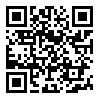Volume 17, Issue 3 (2025)
Iran J War Public Health 2025, 17(3): 1001-1009 |
Back to browse issues page
Article Type:
Subject:
Ethics code: IR.AJAUMS.REC.1402.044
History
Received: 2025/08/21 | Accepted: 2025/09/28 | Published: 2025/07/19
Received: 2025/08/21 | Accepted: 2025/09/28 | Published: 2025/07/19
How to cite this article
Zibasokhan S, Sharififar S, Azizi M, Teimouri F, Azarmi S. Challenges and Promotion Strategies of Temporary Medical Centers in Mass gatherings: A Qualitative Study. Iran J War Public Health 2025; 17 (3) :1001-1009
URL: http://ijwph.ir/article-1-1660-en.html
URL: http://ijwph.ir/article-1-1660-en.html
Download citation:
BibTeX | RIS | EndNote | Medlars | ProCite | Reference Manager | RefWorks
Send citation to:



Rights and permissions
BibTeX | RIS | EndNote | Medlars | ProCite | Reference Manager | RefWorks
Send citation to:
1- , s_sharififar@yahoo.com
Abstract (213 Views)
Aims: Undoubtedly, the Arbaeen pilgrimage is considered one of the largest annual religious gatherings in the world. A large number of pilgrims participate in this event, which can pose many challenges to their health. These challenges include respiratory, digestive, and infectious diseases; muscle and skeletal problems; various types of traumas; heatstroke or frostbite; and even the recurrence of chronic diseases. Additionally, it overshadows the local healthcare infrastructure, and the establishment of Military Temporary Medical Centers (MTMCs) seems necessary, as the health system is overcapacity. In this regard, the aim of this study is to examine MTMC challenges and identify solutions to overcome these challenges.
Methods: This qualitative approach involves various methods of data collection, including in-depth and Semi-structured interviews and field observations. The participants were selected via the purposive sampling method. This research was carried out by observing the approach of maximum diversity among the target population comprising managers, healthcare decision-makers, providers, and clients of the MTMC in the 2024 Arbaeen Pilgrimage.
Findings: Data saturation was achieved after conducting 15 interviews. By analyzing the data, codes were extracted and placed in two domains: challenges and promotion strategies. The main categories of challenges include resources and infrastructure, leadership and organization, community and knowledge, health and safety, and in the promotion strategies domain, the main categories include resource optimization, leadership and development, community and awareness, health and safety.
Conclusion: Overall, identifying and managing these challenges can provide evidence-based guidance for policymakers and planners involved in this major religious event.
Methods: This qualitative approach involves various methods of data collection, including in-depth and Semi-structured interviews and field observations. The participants were selected via the purposive sampling method. This research was carried out by observing the approach of maximum diversity among the target population comprising managers, healthcare decision-makers, providers, and clients of the MTMC in the 2024 Arbaeen Pilgrimage.
Findings: Data saturation was achieved after conducting 15 interviews. By analyzing the data, codes were extracted and placed in two domains: challenges and promotion strategies. The main categories of challenges include resources and infrastructure, leadership and organization, community and knowledge, health and safety, and in the promotion strategies domain, the main categories include resource optimization, leadership and development, community and awareness, health and safety.
Conclusion: Overall, identifying and managing these challenges can provide evidence-based guidance for policymakers and planners involved in this major religious event.
Send email to the article author








